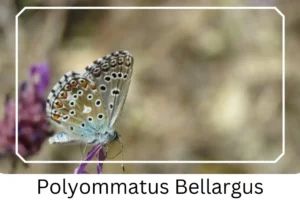Adonis Blue (Polyommatus bellargus)
The Adonis Blue butterfly is a mesmerizing spectacle of nature, particularly renowned for the males’ vibrant blue wings. Active predominantly during the summer months from May to September, this butterfly’s distinct coloration makes it a jewel of the insect world. Its presence signifies the health of the ecosystems it inhabits, making it not only a subject of beauty but also of ecological importance.
Scientific Classification
- Family: Lycaenidae
- Genus: Polyommatus
- Scientific Name: Polyommatus bellargus
Overview
Belonging to the small to medium-sized category of butterflies, the Adonis Blue plays a crucial role in the biodiversity of Central, Southern, and Western Europe, among other regions. Its life cycle from caterpillar to adult showcases a fascinating journey of transformation, marked by distinctive physical characteristics at each stage. This butterfly’s reliance on specific habitats and plants for survival highlights the delicate balance of nature.
Description and Identification
Caterpillar
The Adonis Blue caterpillar is easily identifiable by its dark green body, adorned with dark spines and yellow bands along its back and sides. Growing to a maximum length of 1.6 cm, it spends the winter in the caterpillar stage, preparing for its transformation.
Pupa
Transitioning into the pupa stage, the chrysalis initially presents a light green hue, gradually aging to a light brown or beige color. This stage is crucial for the butterfly’s development into its adult form.
Adult Butterfly
Sexual Dimorphism: A striking feature of the Adonis Blue is the distinct difference in appearance between males and females, a phenomenon known as sexual dimorphism.
Color and Appearance: Males boast a brilliant blue coloration with a thin white border, while females display a more subdued brown with blue near the body and orange crescents at the wingtips. Both sexes have a pale brown underside with black spots and orange crescents.

 Average Wingspan: The average wingspan of the Adonis Blue is approximately 3 cm (1.2 in), allowing for swift and agile flight.
Average Wingspan: The average wingspan of the Adonis Blue is approximately 3 cm (1.2 in), allowing for swift and agile flight.
Flight Pattern: Characterized by a fast and erratic flight pattern, these butterflies tend to fly low over vegetation, navigating their environment with precision.
Eggs
Adonis Blue eggs are bright white, round, and have a rugged exterior with a small depression at the center. Each egg is laid individually.
Quick Facts | |
| Distribution | Central, Southern, and Western Europe, South of Russia, Iraq, Iran, Caucasus, Transcaucasia, and Turkey. |
| Habitat | Prefers flowery hillsides on limestone and chalk downlands, and in warm, sheltered spots. |
| Host Plants | Horseshoe Vetch (Hippocrepis comosa). |
| Adult Diet | Primarily flower nectar. |
How to Identify Adonis Blue?
Identifying the Adonis Blue butterfly involves looking for the distinctive bright blue coloration of the males, which is unmatched in its intensity. Females, though primarily brown, have a unique blue tint near the body, setting them apart from other species. Observing the butterfly’s flight pattern can also aid in identification; its fast, low-flying behavior over vegetation is characteristic. The presence of orange crescents on the underside of the wings, visible when closed, further aids in distinguishing the Adonis Blue from other butterflies. This species’ specific habitat preference for flowery hillsides on limestone and chalk downlands offers another clue for accurate identification.
Did You Know?
- The Adonis Blue is named after Adonis, a figure of beauty and desire in Greek mythology, reflecting the butterfly’s stunning appearance.
- Despite their fragile look, Adonis Blue butterflies are adept at surviving in specific microclimates, making them excellent indicators of environmental health.
Conclusion
The Adonis Blue butterfly is not just a visual marvel but also an ecological indicator, reflecting the health of its habitat. Understanding and preserving the environments that support the Adonis Blue is crucial for maintaining biodiversity and the beauty of our natural world. With its vivid colors and fascinating life cycle, the Adonis Blue continues to captivate and inspire nature enthusiasts and conservationists alike.
Adonis Blue Pictures

Scientific Classification

- Family: Lycaenidae
- Genus: Polyommatus
- Scientific Name: Polyommatus bellargus










